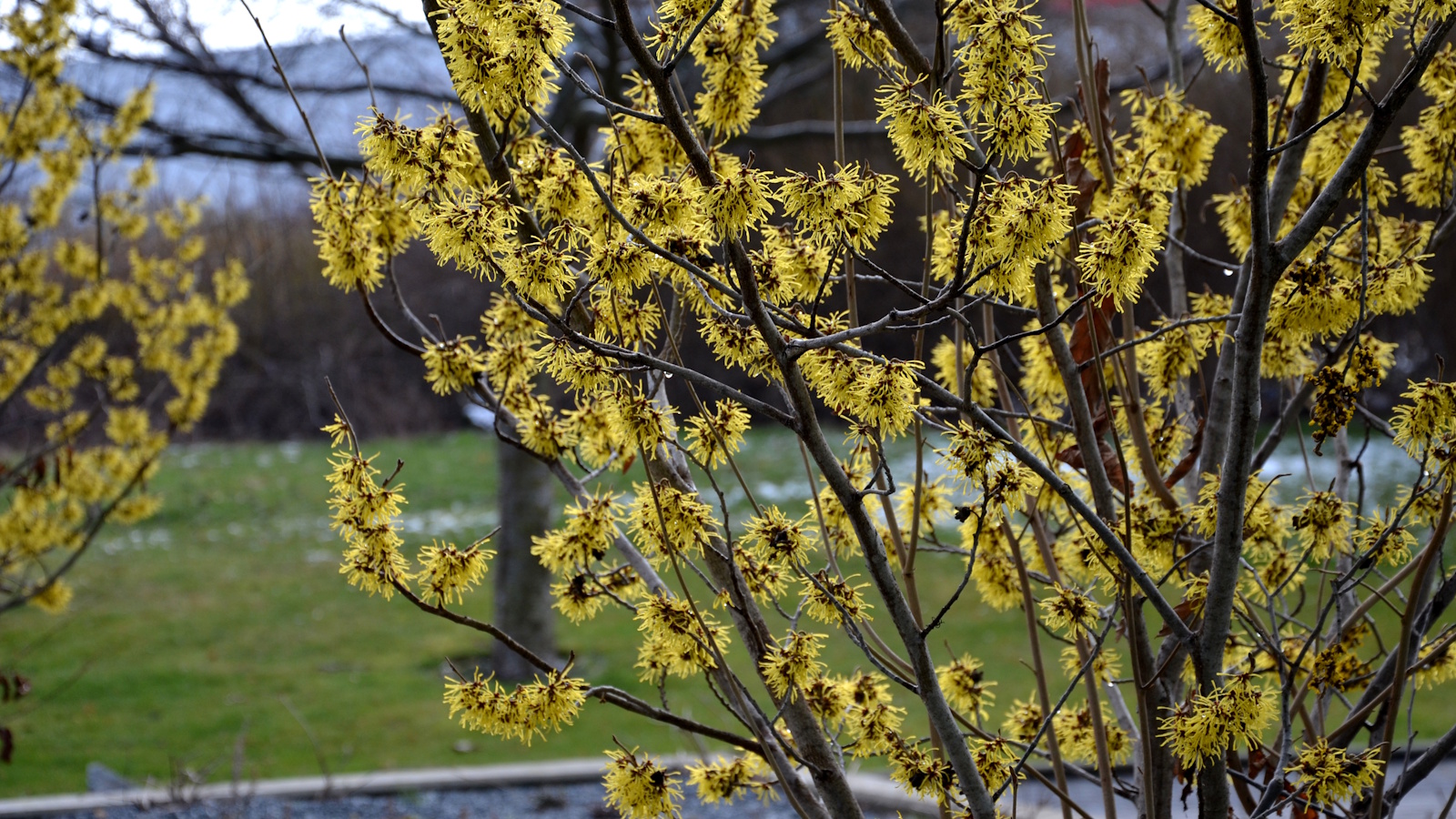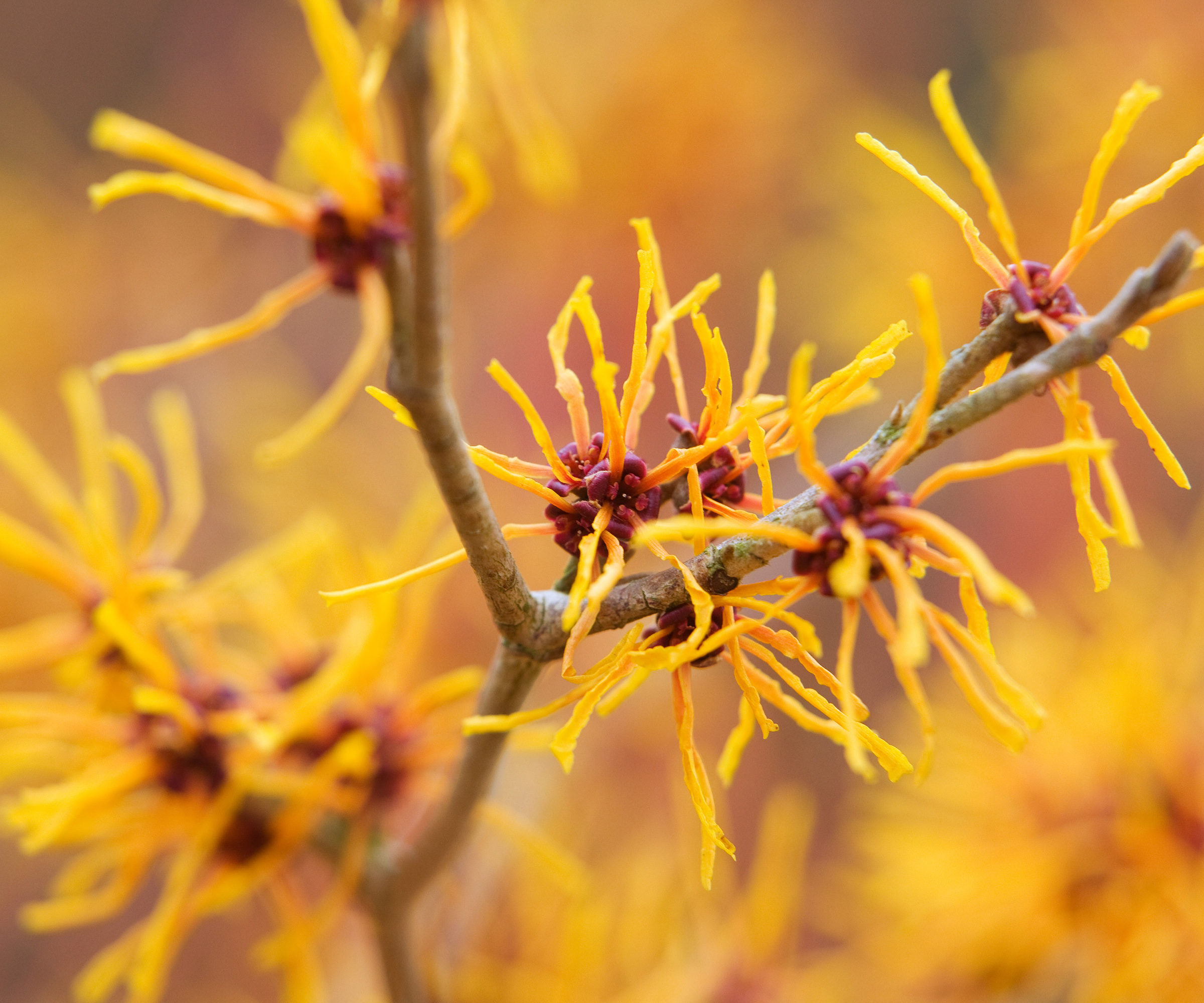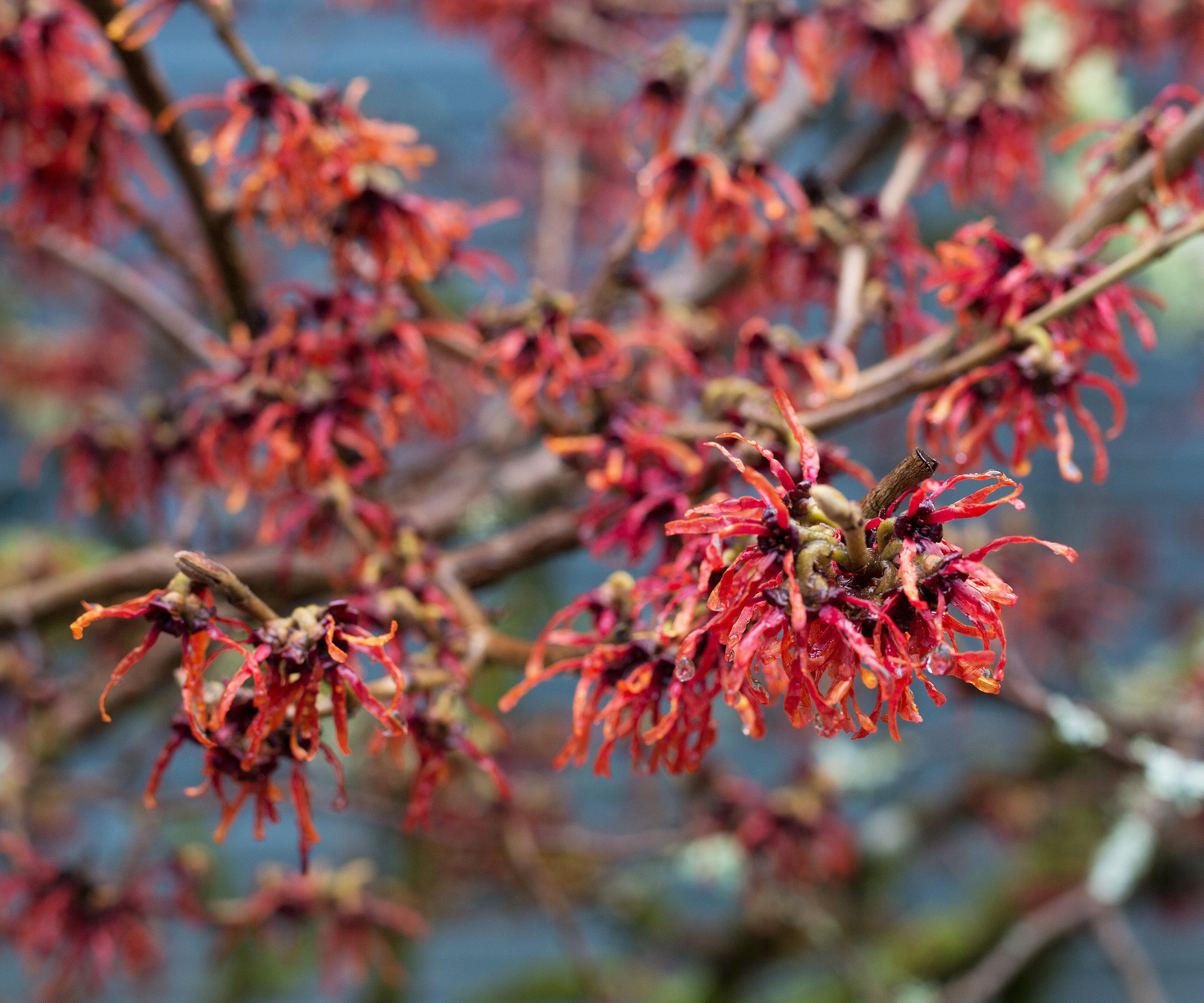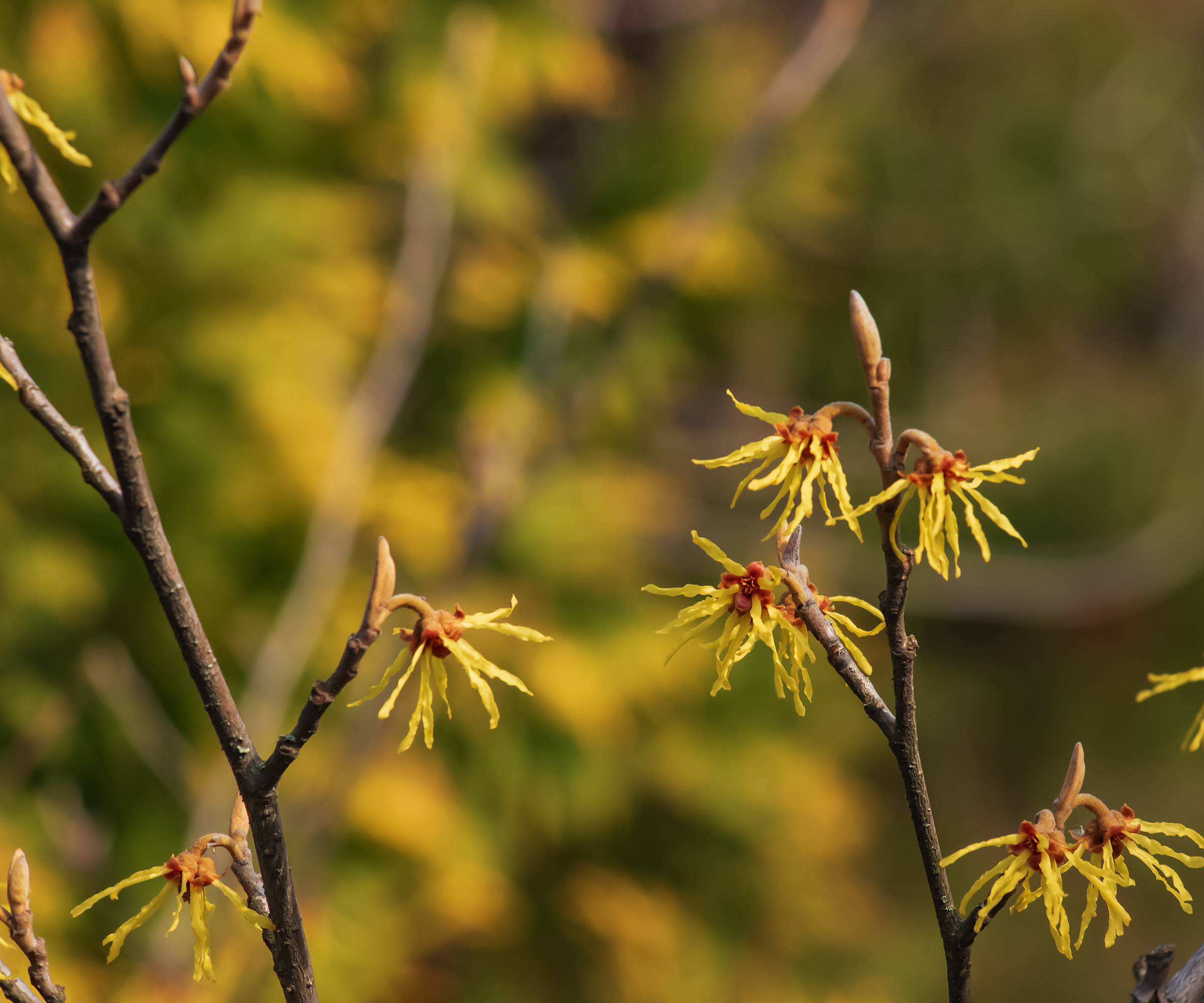
Witch hazel is one of few winter-flowering shrubs or small trees that can help illuminate garden borders in the cold and dark months of the year. Along with camellias, wintersweet and winter jasmine, witch hazel can transform an otherwise bleak landscape, producing masses of scented spider-like golden, orange or red blooms.
Learning how to grow witch hazel in pots is relatively straightforward and preferable if you are gardening in a smaller yard or rented space. There are, however, several container culture rules to follow if you want to get the most out of these tough and resilient shrubs, typically hardy down to US hardiness zone 3.
So, whether you are a seasoned witch hazel grower or perhaps looking to add a dwarf variety to your pot collection, our guide has all the information you need to grow these winter-blooming plants in pots.

How to grow witch hazel in pots
If you are looking for some of the best trees to grow in pots, have you considered planting a native witch hazel species, such as the North American witch hazel, Hamamelis virginiana? Found growing in woodlands and forests across Canada and the United States, from chilly Nova Scotia down to the warmer climates of Texas, this species is one of many that can dazzle in the winter months when grown in a container.
Growing advice for witch hazel in pots

'Learning how to grow witch hazel in pots is a good idea for gardeners with small spaces,' says Drew Swainston, former professional gardener and gardens content editor at Homes & Gardens. 'Most witch hazel species have their headline moment at a time when many plants are dormant, so one advantage to container growing is that you can move the pot (if it is not too heavy) to a central spot for the floral show.'
As Drew says, these statement trees come into their own during winter, and moving your pots around can help to keep your displays interesting and dynamic, changing with the seasons. While witch hazel shrubs can reach 30 feet in the ground, your container will restrict its growth. Opt for a container six or so inches bigger than the plastic nursery container, providing a little room to grow, but not too much.
'Place your container in a partially shaded or sunny spot,' Drew says. 'Sunshine will really help with flower production, but growing in a partially shaded position with only three or four hours of direct sun should be fine too.'
Once your pot is in the right position, choose a good-quality potting mix and combine it with a little mulch in a wheelbarrow. Witch hazel shrubs prefer slightly acidic, rich, loamy soil like you would find in a woodland, so incorporating some organic matter at this stage is a good idea. Organic potting soil mixes are available to order from Walmart.
'In terms of watering, witch hazel prefers consistent moisture, although they do not enjoy waterlogged conditions,' Drew continues. 'Drainage is important, but so too is regular deep waterings during the spring and summer months, giving your container at least one to two cans of water every few days during dry weather.'
While witch hazels are considered low-maintenance trees for pots, they will benefit from a monthly application of balanced, liquid fertilizer during the growing season. Remember that plants grown in pots are reliant on you, the gardener, for their water and nutrients, and any goodness in the container will quickly wash out.
Finally, in terms of how to prune witch hazel, these shrubs do not need regular pruning, particularly when grown in a pot. With a moderate growth rate of 10-24 inches per year that will be much reduced when grown in a pot, simply prune out any dead, diseased or crossing branches, but maintain a natural shape that suits this species.
With a smart, rounded design, these fiberglass pots are suitable for witch hazel shrubs and trees and will certainly give your yard a modern twist.
Recommended witch hazel varieties for container growing

All species of witch hazel make for ideal trees for small gardens. However, it can be a good idea to opt to plant a dwarf variety if you are growing in pots, as this will significantly limit and restrict the growth of your plant, which can shock a larger species.
There are many cultivars of North American witch hazel, Hamamelis virginiana, that are particularly suited for container growing. 'Little Suzie', for example, grows no taller than five feet, making this an ideal option for pots. North American witch hazel live plants are available from Amazon.
Another native option found growing across the Ozark Mountains in Arkansas and Missouri, Oklahoma, Kansas, and Illinois, is Hamamelis vernalis, another heavily scented species that produces orange flowers that open slightly later than most other witch hazels in the springtime, typically around March.
Native to Asia, Hamamelis x intermedia 'Arnold Promise' is a popular dwarf variety of witch hazel that is ideal for smaller yards, reaching no taller than 10 to 12 feet. This variety produces yellow-scented blooms in January and February.
This North American witch hazel, Hamamelis virginiana, will arrive as bare root stock, with a three to four-foot stem. Plant from October to April, avoiding periods of heavy snow or frost.
FAQs
Do I need to protect witch hazel in the winter?
All witch hazel species exhibit remarkable hardiness, with most able to survive cold winters typical of US hardiness zone 3 or US hardiness zone 4. For this reason, established plants do not need any protection. However, for younger specimens that are planted in the ground or pots, it can be a good idea to cover the plant canopy and crown/base with a plant frost protection kit, available to buy online from Amazon, particularly if heavy snowfall or long periods of frost are expected.
Are there any witch hazel pests or problems to be aware of?
Witch hazel shrubs are relatively pest and disease-free, save for the usual suspects, such as aphid attack or powdery mildew infection. In my experience, witch hazel shrubs usually tolerate these problems without any long-term significant damage, but organic solutions can be used if you are concerned. Rabbits and deer, however, are known to strip the bark at the base of witch hazel trees, so building a small plant protection cage, available from Amazon, can be a good idea, at least for the first two to three years.
Repotting your witch hazel shrubs once every three years is an important job to add to your spring gardening checklist. While this is an infrequent task, refreshing the container soil and providing room to grow will help to keep your shrubs in good shape. Select a pot that is four to six inches larger than your current container, repotting once the blooms have faded and the temperatures begin to rise, usually around March or April. It might be necessary to ask a gardening friend or neighbor to help, taking care not to damage the rootball. Witch hazel does not enjoy transplanting, so minimal disruption or damage is crucial.
For more winter inspiration, see our guide on how to grow camellias in pots, and fill your borders with colorful blooms during the darker months of the year.







